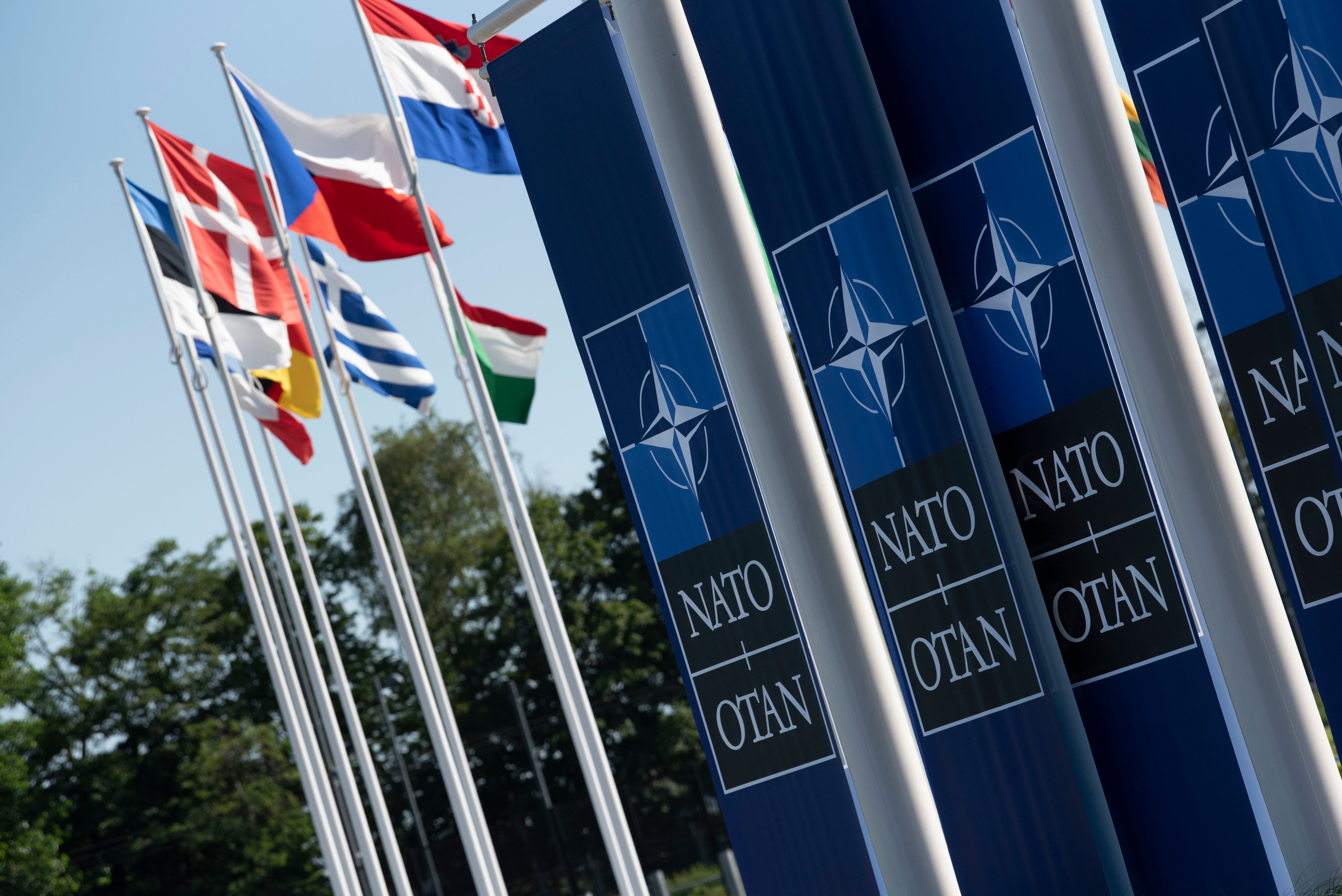Uniform changes are on the horizon.
Navy officials are on the cusp of approving new uniforms and tweaking old ones to expand sailors' options and modernize their sea bag — changes that will start appearing as soon as a year from now.
These moves are likely to prove lower-profile than the trial of female sailors wearing the iconic "Dixie cups" and blue "crackerjacks," but they include popular options that everyone could be wearing out in town soon.
Here's the four uniform updates in the works:
■ Warm-up suit. High-performance outerwear worn by Marines could be quickly adapted for the Navy.
■ Cold-weather parka. Officials want to adopt a Coast Guard 3-in-1 jacket that would keep sailors warm in cold climates.
■ Women's 'chokers.' Summer whites collars for women are getting retooled to look like men's.
■ Lightweight NWUs. Sailors are testing two types of the Navy working uniform, designed to be lighter and more breathable for tropical environments.
Warm-up suit
The seven-year search for a high-performance jogging suit is zeroing in on a new design worn by Marines and Naval Academy midshipmen.
It's a moisture-wicking running suit that sports reflective trim along the zipper, pockets and chest for high-visibility. The suit would offer more warmth and exposure protection than a pair of shorts and a T-shirt, but less than the Navy blue sweatpants and sweatshirt, and it is likely that it could be worn with civilian clothes, much like command ball caps.
Marines wear the $113 running suits in field green, with "Marines" emblazoned across the back in red letters with gold trim, and "USMC" written down the right pant leg. The symbolic eagle, globe and anchor insignia is on the left breast and upper left thigh.
Mids wear a Navy blue suit, which would be a natural fit for sailors, Navy personnel officials told Navy Times.
The color scheme for the warm-up suit is to be determined, but is likely to be Navy blue with silver or gold lettering, said Rear Adm. Fritz Roegge, who oversees the uniform matters office for the chief of naval personnel.
The academy warm-up suit is just the latest design as the Navy searches for high-quality and affordable running gear. The previous version, a New Balance track suit that featured reflective lettering and antimicrobial treatment, was found to wear out quickly in 2012 testing by recruits.
The new warm-up suit will require little additional design cost to the Navy, giving this the best shot of being approved, officials said. The suits are already proven, officials note, and are not planning on a full wear test. Some sailors are expected to start wearing the warm-up suit this fall, as officials seek input on sizing and wear policies before the larger roll-out next year.
The Corps has issued each Marine a running suit. Navy personnel officials are still deciding whether to do that or make it optional, a move that would cut out the fielding price but hamper uniformity at the command level.
They are also weighing whether to allow the running suit jacket to be worn with civvies, as it is in the Corps, with the caveat that it must be zipped at least half-way.
Officials say that, if it's approved by Chief of Naval Operations Adm. Jon Greenert, the Navy could be running in its new warm-up suit by the winter of 2015.
And if that option falls through, another possibility is adapting the Army's new fitness uniform. It does not have reflective elements — to keep soldiers out of sight in war zones — but has comfortable features like underarm vents, a drawstring waist and half-elastic leg openings.
New parka
The Navy has selected a black version of the Coast Guard's three-in-one parka for use when the peacoat won't cut it — and officials hope to have them in sailors' closets before next winter.
The waterproof outer shell has a center rank tab, similar to the Navy working uniform parka. The shell has two zip-in liners: a fleece liner and a lighter, water-repellent jacket, which can be worn as a stand-alone garment and sports its own rank tab.
A slight redesign is underway to change the parka's color from dark blue to black and to ensure fleece liners comfortably and accurately fit the multiple sizes the Navy will order. Though it will take a little more time, officials said this will save money and provide a better fit in the long run.
The heavy parka worn by the Canadian navy also was tested. Though noted for its warmth, the coat lacks layering and has angled zippers that don't match the styling of Navy uniforms.
But the ultimate factor that got the parka tossed was that it is, well, Canadian.
"The Coast Guard parka is compliant with the Berry Amendment as it is made in the USA," said Lt. Stephanie Homick, a spokeswoman for the chief of naval personnel. "The Canadian version would have to be completely remade by an American company."
That is not a simple process. On average, it takes three years to see a new uniform item go from concept to roll-out — assuming none of the companies that bid the contract decide to sue when they are not picked. Personnel officials believe they can expedite fielding by picking up the parka already worn by the Coast Guard.
Female 'chokers'
Female chiefs and officers are about to get "choker" whites.
The Navy is planning to overhaul women's service dress whites, a long-sleeve service uniform, to look more like those of male peers. Female chiefs and officers currently wear a white coat and black tie.
Officials want to replace that coat-style jacket with the high-collar "choker" worn by men, which clasps at the neck and is not worn with a tie.
There are still likely to be differences between the male and female versions. The new female service dress whites will have no pockets on the chest and will feature smaller, proportional buttons. The male uniform has two chest pockets.
A wear test is scheduled for the spring of 2016. If approved, the new female uniform is expected to be rolled out Navy-wide that fall. Officials are using the coming 18 months to develop form-fitting patterns.
Part of this effort will be drawn from an anthropometric study the Navy will launch this fall. The study is designed to improve the comfort, performance and fit of all uniforms for men and women. The Army in 2010 conducted a similar 15-month study that measured 94 body points on 13,000 soldiers. The study — the first of its kind since 1988 — found that today's service members are larger and have more muscle, and uniform fits are being adjusted accordingly.
Some of that data was used to develop a female-specific Army combat uniform, the soldier's equivalent of the Navy working uniform. The female ACU comes in 13 sizes and boasts more than a dozen upgrades suited to women. Jackets come in different chest, waist and sweep measurements, while trousers come in different hip measurements.
The Navy anthropometric correlation study will measure 4,000 sailors and compare those findings to Army data.
Wear tests of a new female combination cover are also underway. Approximately 30 female officers and chiefs around the Washington, D.C., region are testing the newly designed covers, which feature a round brim like the men's version, instead of the "bucket"-style headgear currently worn.
In addition, up to 300 sailors this fall will test two other new options for women: the service dress blue jumper and "Dixie cups." These, too, are part of the Navy's top-level push to make female uniforms more similar to men's. Feedback will be incorporated into a final design expected in fiscal 2015, with fleet introduction the following year, officials say.
Lightweight NWUs
Efforts to develop and field a lightweight version of the NWU continue. A 60-day wear test of two variants has wrapped up.
The 238 sailors testing them are in three locations — Bahrain, Guam and Hawaii. They have recorded the uniforms as "more breathable" and "much cooler," according to officials. Both versions are roughly a third lighter than the standard blue-and-gray cammies. One lacks a wrinkle-free coating; the other receives the permanent press treatment later in the manufacturing process.
Officials will be analyzing sailor feedback on the versions later this year and expect to announce their pick in early 2015 and whether to go forward with fielding.
The Navy has also been eyeing a sweeping review of lightweight fabrics that could make existing uniforms more comfortable. But officials say that review is likely to be expensive and should take a backseat to more pressing uniform initiatives.
Staff writers Sam Fellman and Joe Gould contributed to this report.





